
Shirley Temple (1928–2014) was an American child actress, dancer, and singer who began her film career in 1931, and continued successfully through 1949. When Educational Pictures director Charles Lamont scouted Meglan Dancing School for prospective talent, three-year-old student Temple hid behind the piano. Lamont spotted her and immediately decided she was the one he was looking for. Starting at $10 a day, she was eventually under contract for $50 per film. The production company generated its Baby Burlesks one-reeler film short satires of Hollywood films in 1931–1933, produced by Jack Hays and directed by Lamont. Temple made eight Baby Burlesks films, and 10 other short films, before being signed to star in feature-length motion pictures.
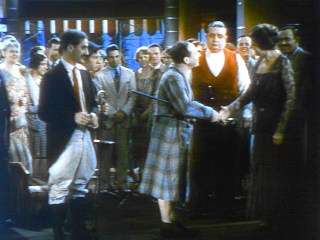
Multicolor is a subtractive two-color motion picture process. Multicolor, introduced to the motion picture industry in 1929, was based on the earlier Prizma Color process, and was the forerunner of Cinecolor.

The Great Gabbo is a 1929 American Pre-Code early sound musical drama film directed by James Cruze, based on Ben Hecht's 1928 short story "The Rival Dummy", and starring Erich von Stroheim and Betty Compson. The film features songs by Lynn Cowan, Paul Titsworth, Donald McNamee and King Zany.
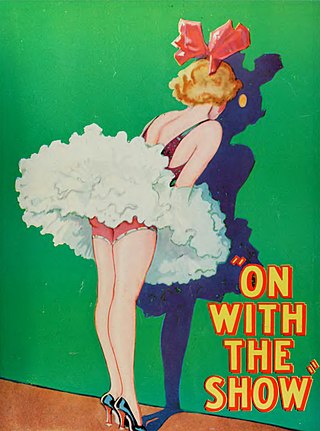
On with the Show! is a 1929 American pre-Code musical film produced by Warner Bros. Filmed in two-color Technicolor, the film became the first all-talking, all-color feature-length film, and the second color film released by Warner Bros.; the first was the partly color musical The Desert Song (1929).
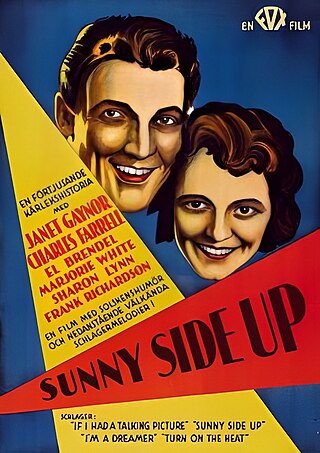
Sunny Side Up is a 1929 American pre-Code Fox Movietone musical film starring Janet Gaynor and Charles Farrell, with original songs, story, and dialogue by B. G. DeSylva, Lew Brown and Ray Henderson. The romantic comedy/musical premiered on October 3, 1929, at the Gaiety Theatre in New York City. The film was directed by David Butler, had (now-lost) Multicolor sequences, and a running time of 121 minutes.

Paris is a 1929 American pre-Code musical comedy film, featuring Irène Bordoni. It was filmed with Technicolor sequences: four of the film's ten reels were originally photographed in Technicolor.
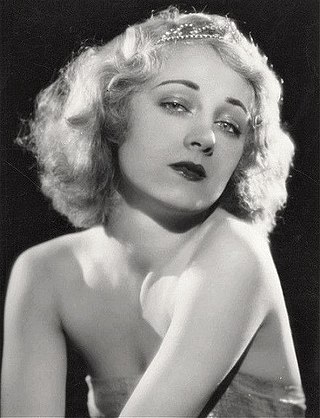
Mary Josephine Dunn was an American stage and film actress of the 1920s and 1930s.

Melody Lane is a 1929 black and white American musical film. It is an adaption to the play The Understander, written by Jo Swerling.
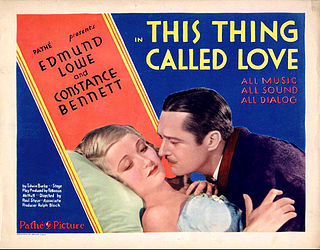
This Thing Called Love is a 1929 American romantic comedy pre-Code film directed by Paul L. Stein and starring Edmund Lowe, Constance Bennett, Ruth Taylor, Roscoe Karns, and ZaSu Pitts. Jean Harlow appears in a cameo role as she was not yet famous. The film is based on the play This Thing Called Love, a Comedy in Three Acts, by Edwin J. Burke.
Natural color was a term used in the beginning of film and later on in the 1920s, and early 1930s as a color film process that actually filmed color images, rather than a color tinted or colorized movie. The first natural color processes were in the 1900s and 1910s and were two color additive color processes or red and green missing primary color blue, one additive process of time was Kinemacolor. By the 1920s, subtractive color was mostly in use with such processes as Technicolor, Prizma and Multicolor, but Multicolor was mostly never in use in the late 1920s, Technicolor was mostly in use. The only one who cared to mess with Multicolor was William Fox, probably because Multicolor was more cheaper of a process and at the time in 1929 William Fox was in debt. The difference between additive color and subtractive color were that an additive color film required a special projector that could project two components of film at the same time, a green record and a red record. But additive color didn't required a special projector, the two pieces of film were chemically formed together and was projected in one strip of film.

Excess Baggage is a lost 1928 American synchronized sound comedy film directed by James Cruze and distributed by MGM. While the film has no audible dialog, it was released with a synchronized musical score with sound effects using both the sound-on-disc and sound-on-film process. The film was based on the 1927 play of the same name by John McGowan. The film starred William Haines, Josephine Dunn and Kathleen Clifford.

Quicksands is a 1923 American silent crime drama film directed by Jack Conway, written by Howard Hawks, and starring Helene Chadwick and Richard Dix. The supporting cast features Alan Hale Sr., Noah Beery Sr. and Jean Hersholt. The film was released on February 28, 1923, by American Releasing Corporation.

The Hottentot is a 1922 American silent comedy film directed by James W. Horne and Del Andrews and starred Douglas MacLean. It is based on the 1920 Broadway play The Hottentot by William Collier, Sr. and Victor Mapes. Thomas H. Ince produced the feature with distribution by Associated First National.
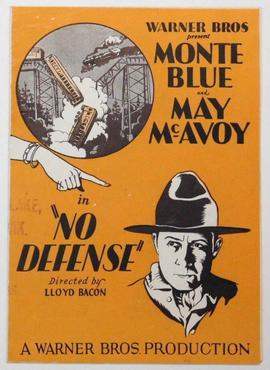
No Defense is a 1929 American sound part-talkie romantic drama film directed by Lloyd Bacon and starring Monte Blue. In addition to sequences with audible dialogue or talking sequences, the film features a synchronized musical score and sound effects along with English intertitles. The soundtrack was recorded using the Vitaphone sound-on-disc system. The film was distributed by Warner Brothers.

The Snob is a lost 1921 American silent comedy film directed by Sam Wood, written by Alice Eyton, and starring Wanda Hawley, Edwin Stevens, Walter Hiers, Sylvia Ashton, W. E. Lawrence, and Julia Faye. It was released in January 1921, by Realart Pictures Corporation.

Parole! is a 1936 American crime film directed by Lew Landers and written by Kubec Glasmon and Horace McCoy. The film stars Henry Hunter, Ann Preston, Alan Dinehart, Alan Baxter, Alan Hale Sr. and Grant Mitchell. The film was released on June 14, 1936, by Universal Pictures.
A Most Immoral Lady is a 1929 American drama film directed by John Griffith Wray and written by Forrest Halsey. It is based on the 1928 play A Most Immoral Lady by Townsend Martin. The film stars Leatrice Joy, Walter Pidgeon, Sidney Blackmer, Montagu Love, Josephine Dunn and Robert Edeson. The film was released by Warner Bros. on September 22, 1929.

The Sap is a 1929 American sound part-talkie comedy film directed by Archie Mayo and written by De Leon Anthony and Robert Lord. In addition to sequences with audible dialogue or talking sequences, the film features a synchronized musical score and sound effects along with English intertitles. The soundtrack was recorded using the Vitaphone sound-on-disc system. The film is based on the 1924 play The Sap by William A. Grew. The film stars Edward Everett Horton, Alan Hale Sr., Patsy Ruth Miller, Russell Simpson, Jerry Mandy and Edna Murphy. The film was released by Warner Bros. on November 9, 1929. This film was the last "part-talkie" produced by the studio.

Modern Love is a 1929 American sound part-talkie comedy film directed by Arch Heath and written by Albert DeMond and Beatrice Van. In addition to sequences with audible dialogue or talking sequences, the film features a synchronized musical score and sound effects along with English intertitles. The soundtrack was recorded using the Western Electric sound-on-film system. The film stars Charley Chase, Kathryn Crawford, Jean Hersholt, Edward Martindel, Anita Garvin and Betty Montgomery. The film was released on July 21, 1929, by Universal Pictures.
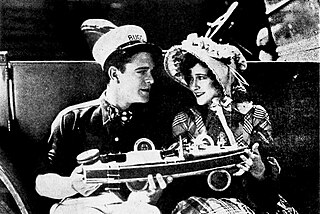
The Kid's Clever is a 1929 American silent comedy film directed by William James Craft and written by Jack Foley, Ernest Pagano, and Albert DeMond. The film stars Glenn Tryon, Kathryn Crawford, Russell Simpson, Lloyd Whitlock, George Chandler, and Joan Standing. The film was released on February 17, 1929, by Universal Pictures.


















